For this final chapter in the Arizona adventure, I thought it would be appropriate to close with all the Hummingbirds that distinguish the region. The ranch was abuzz with Hummers, both at the ranch proper and at higher elevations in the canyon.
First up is the Black-chinned Hummingbird. Thought to be closely aligned with our east coast Ruby-throated Hummingbirds, the western bird possesses a distinctive black gorget. If this male had turned we would have been able to see the beautiful gleaming purple at the throat. Alas, my patience wore thin, and I was unable to capture a view of the rich purple hue beneath his chin.
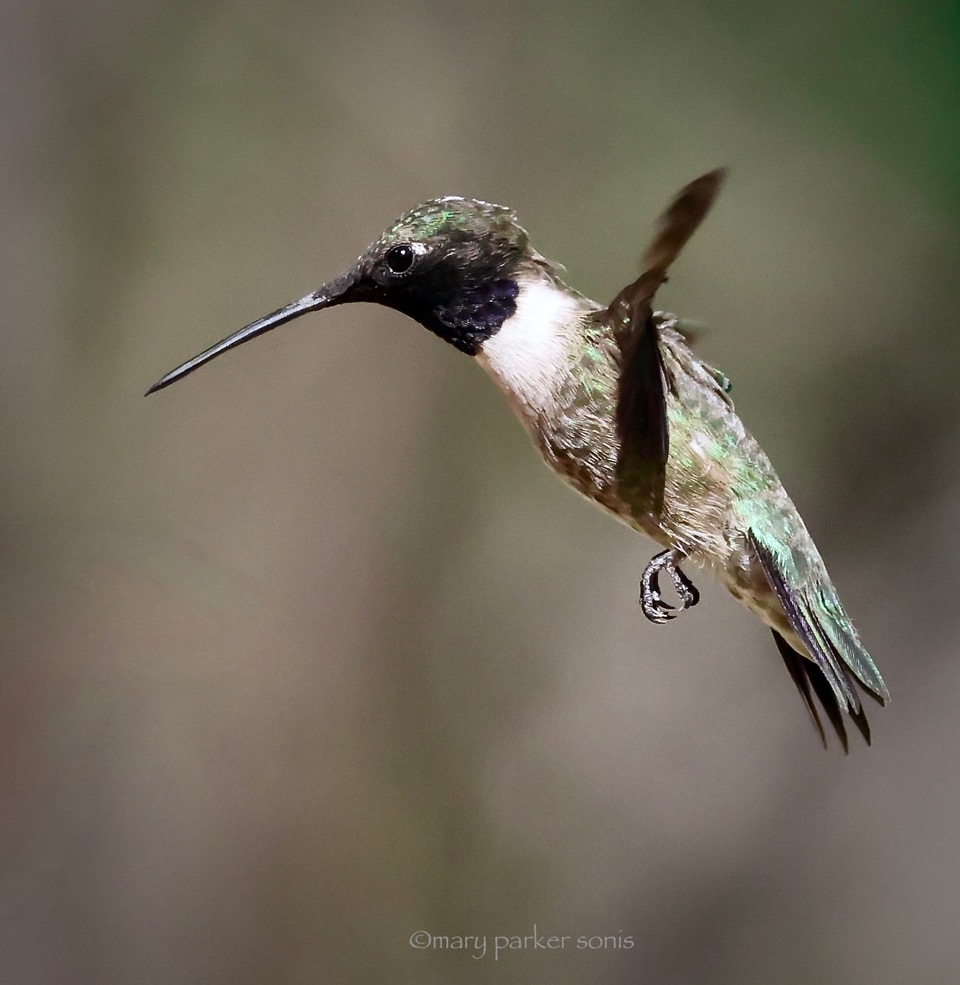
Broad-billed Hummingbird (female). By far this was the most common Hummingbird that we observed at the ranch. Note the pollen on her beak.
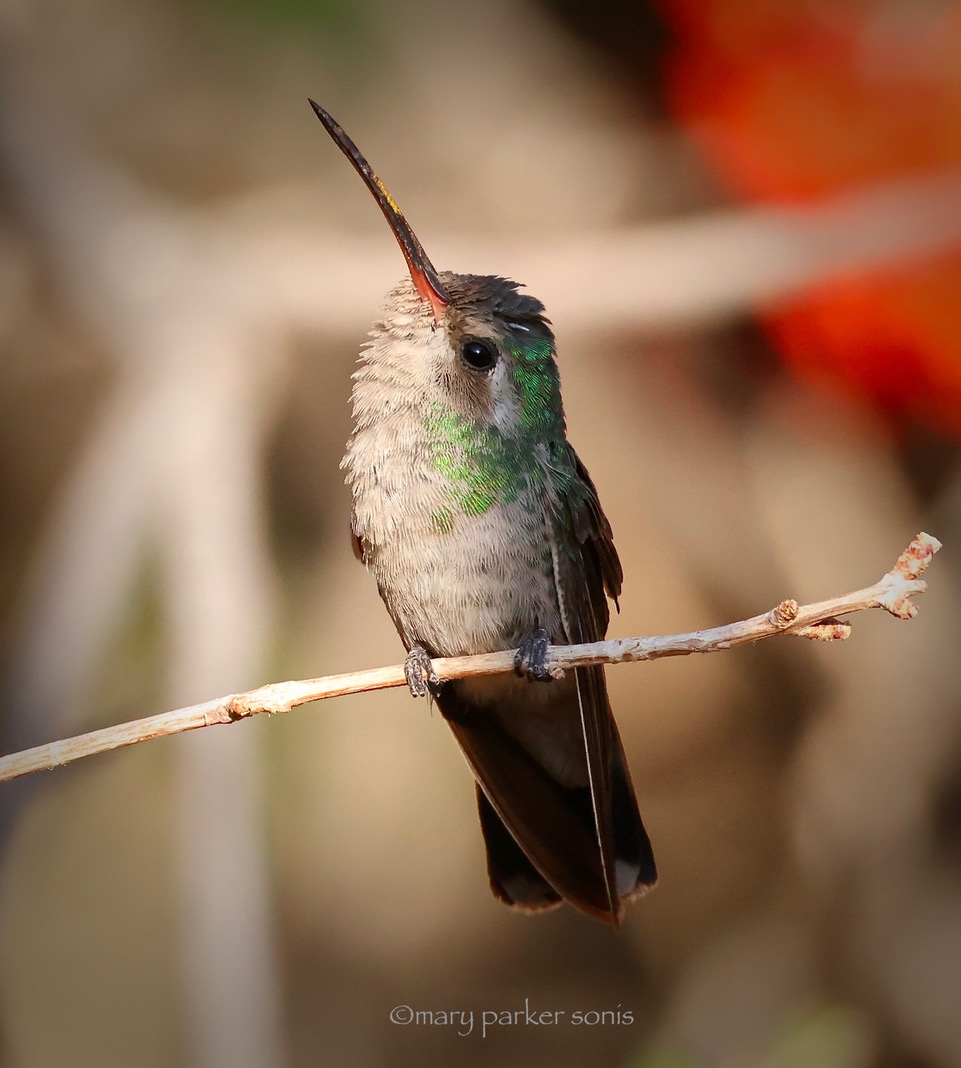
The ranch Pomegranate tree was filled with these birds.
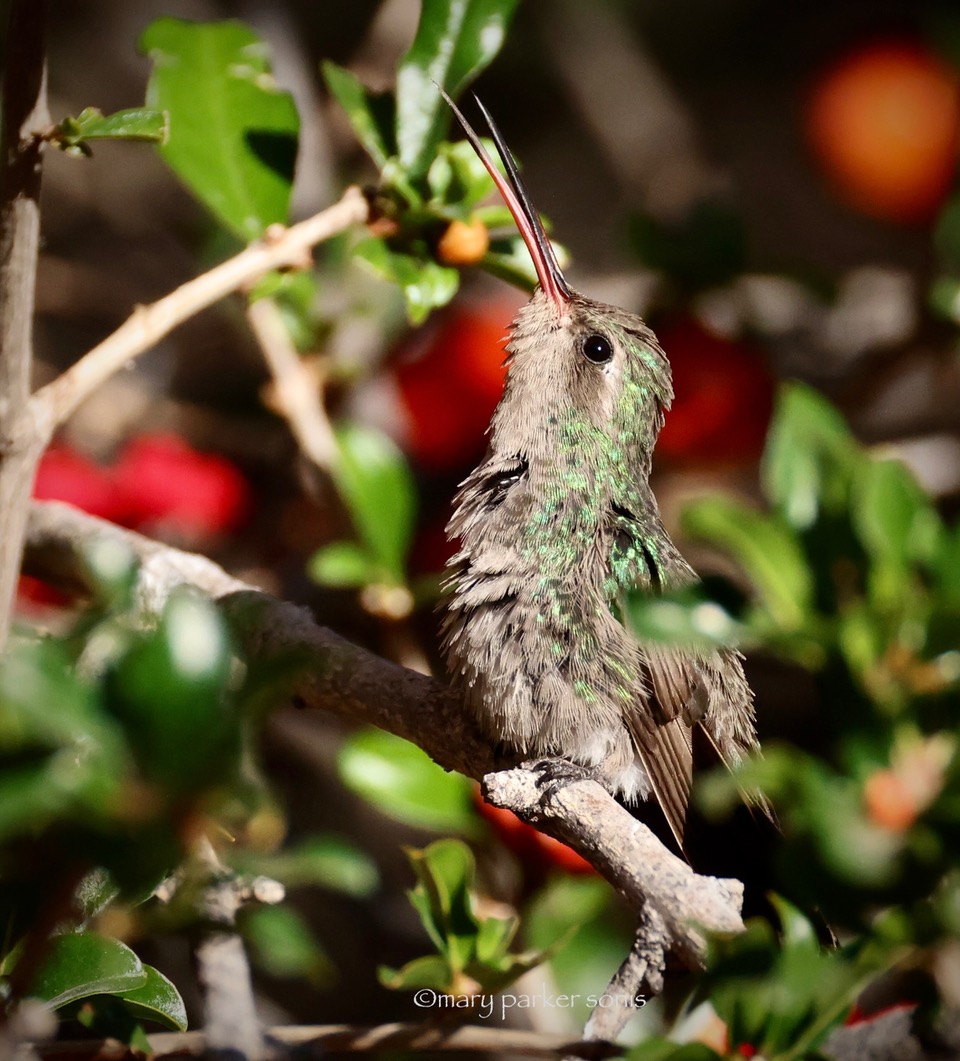
Broad-billed Hummingbird (male)
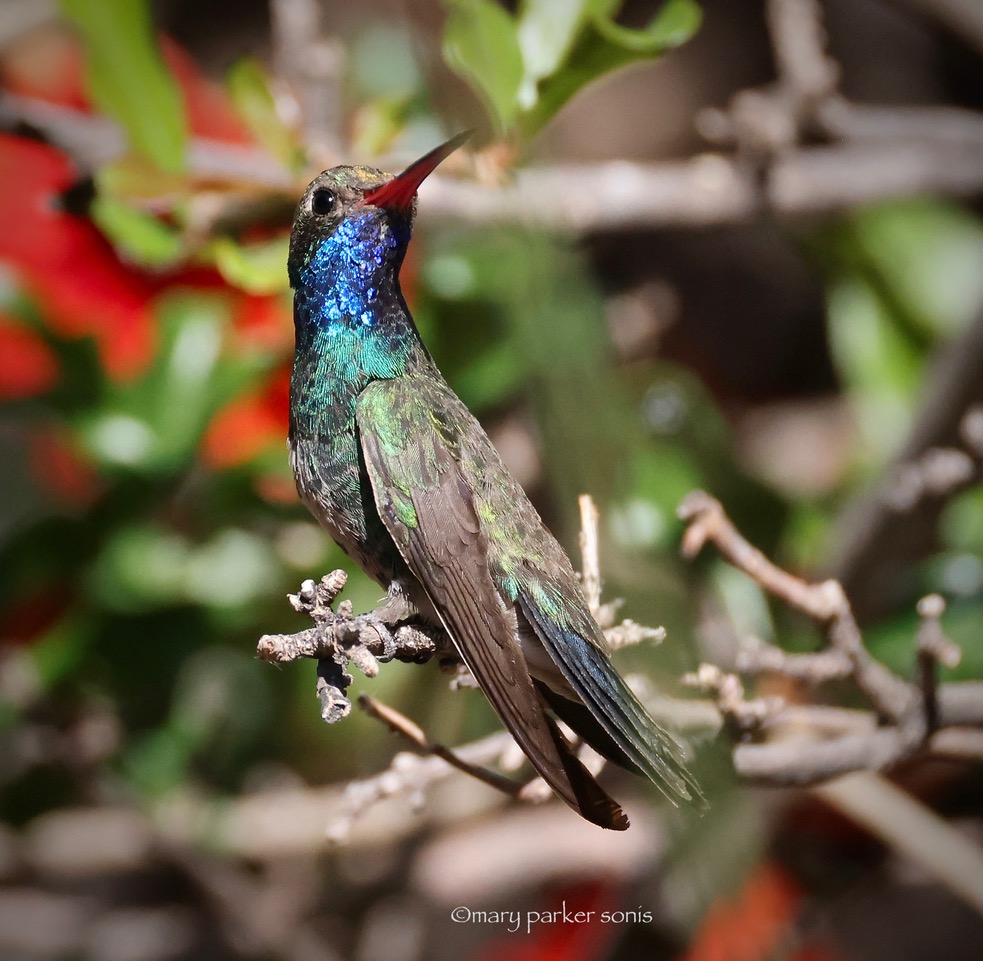
Common at feeders and in flowering trees, this hummingbird can consume 1.6 times its body weight in nectar each day.
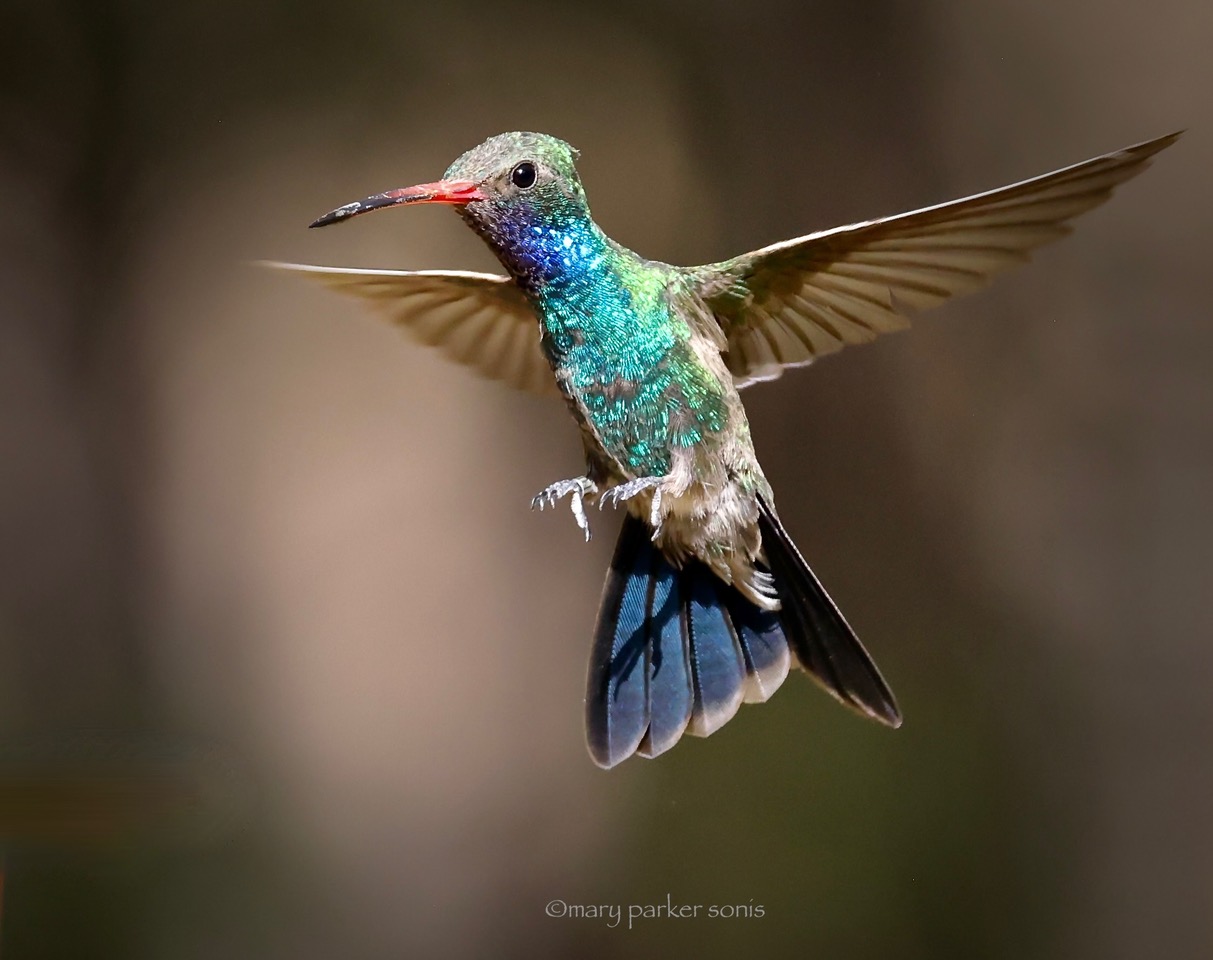
Broad-billed Hummingbird, female in the front left, male hovering in the background.
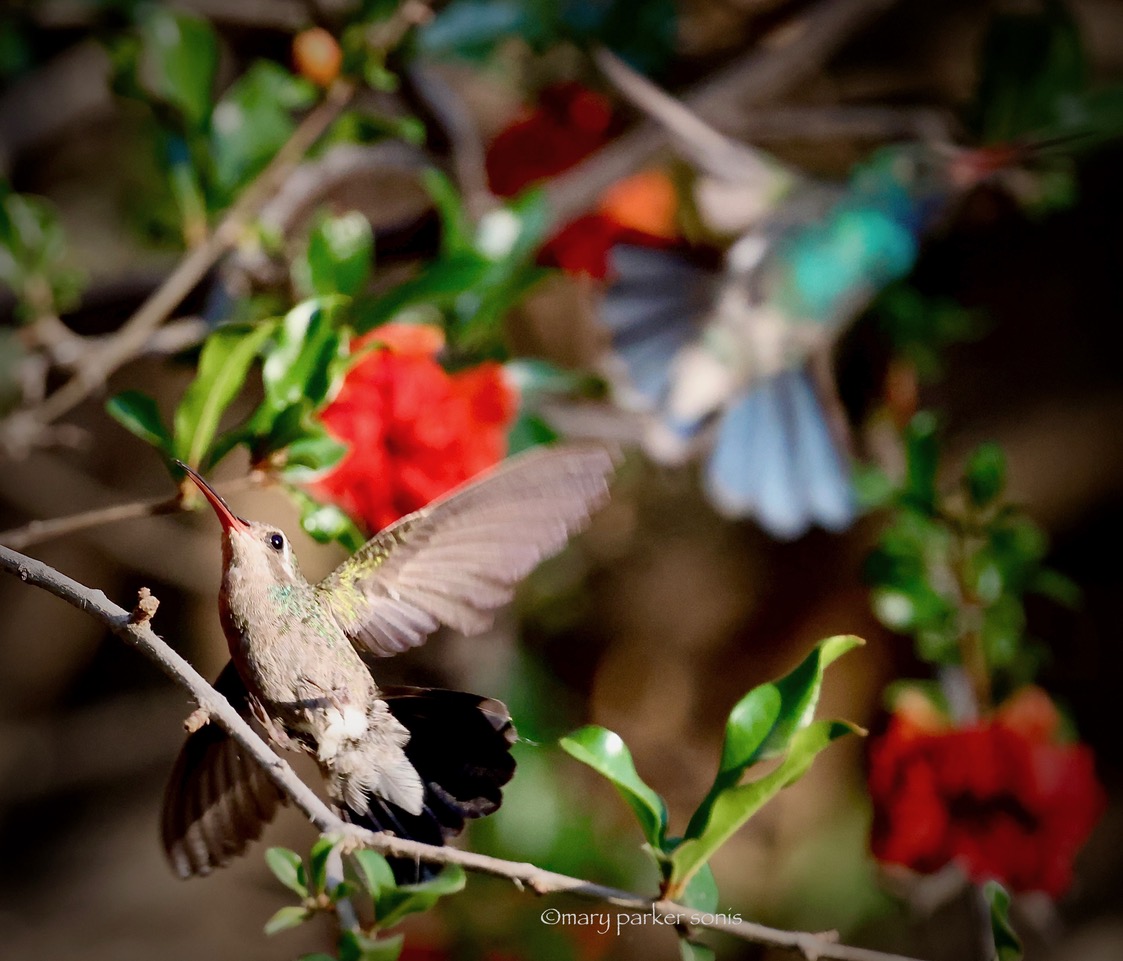
Rivoili’s Hummingbird. When you first encounter this Hummingbird, you’re struck with how dark it appears. The white fleck behind the eye makes a quick ID along with the dark color at first glance. The bird was originally named for Francois Victor Massena, the second Duke of Rivoli, in the year 1829. In 1983, they changed the name to Magnificent Hummingbird. But in 2017, they decided to split the Magnificent into two species. The birds in the American Southwest down to Nicaragua were once again named the Rivoli. So what’s the problem? The Duke was an amateur ornithologist and in those days, feathers and skins were fashionable. Francois had in his collection 12,500 bird skins. Oh, but it gets worse. The skins imported to Europe often rotted on the boats bringing them back to Europe, so they treated those skins with a concoction of arsenic soap. Slave labor was used to prepare those skins. Today, museums have these bird skins in their collections, but the handling of the skins presents a safety risk for museum personal. I can see another name change on the horizon, as modern ornithologists grapple with a rather sordid past. Some people just insist it’s the Magnificent, and so be it.
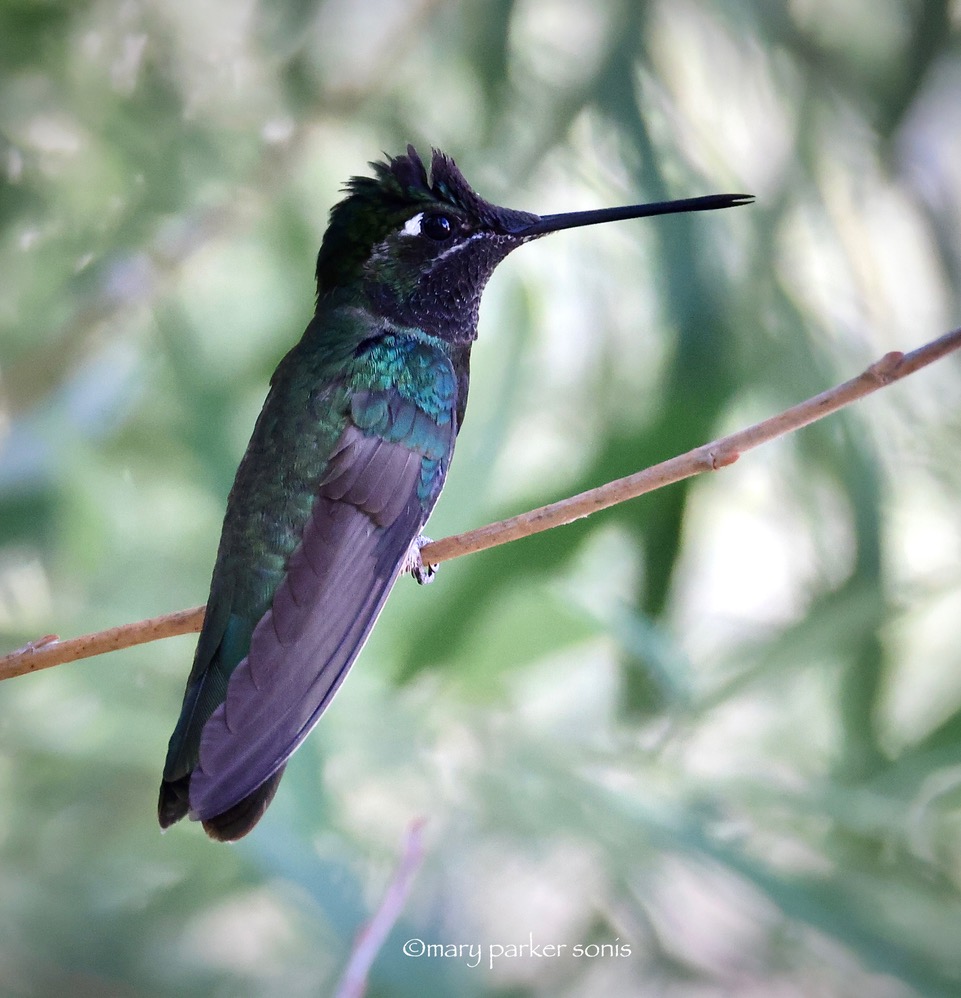
When the Magnificent turns around you see the reason for the name.
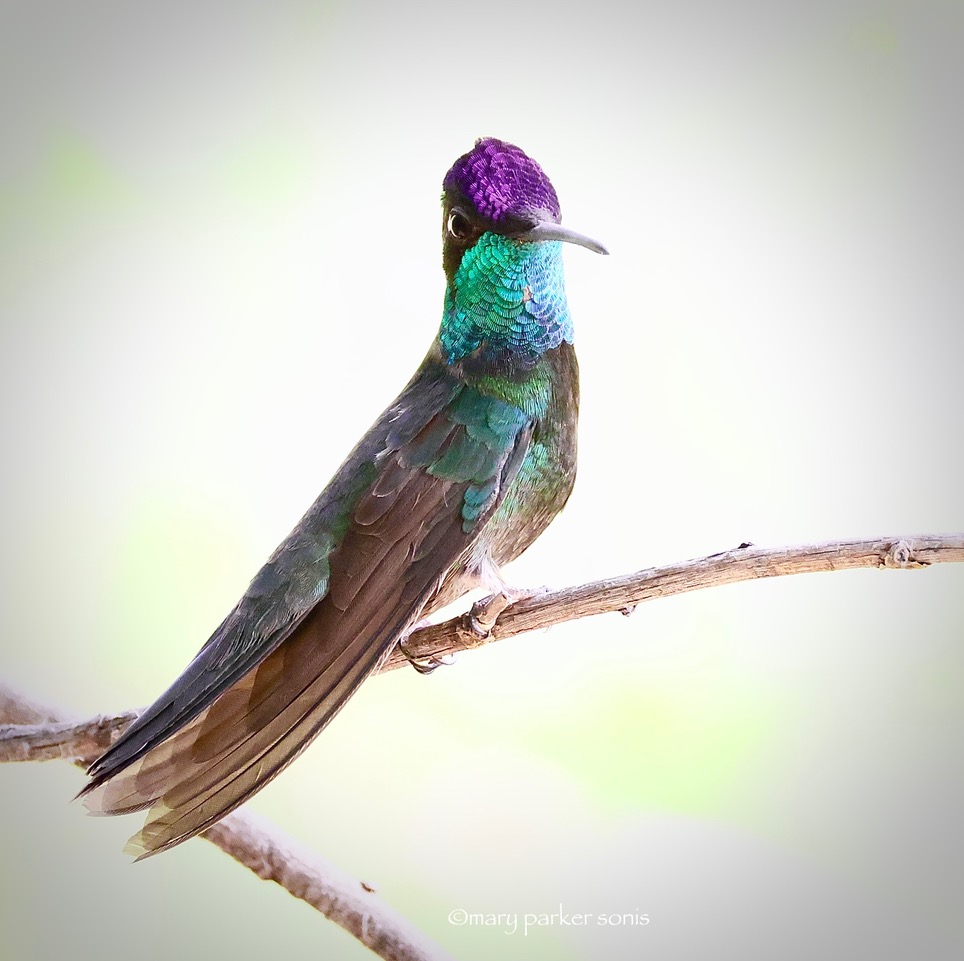
The other wonderful species of the canyon is the Blue-throated Mountain gem. He’s a flashy, large hummingbird (5.1 inches long) and these birds possess a grand showy tail, along with their marine blue gorget.
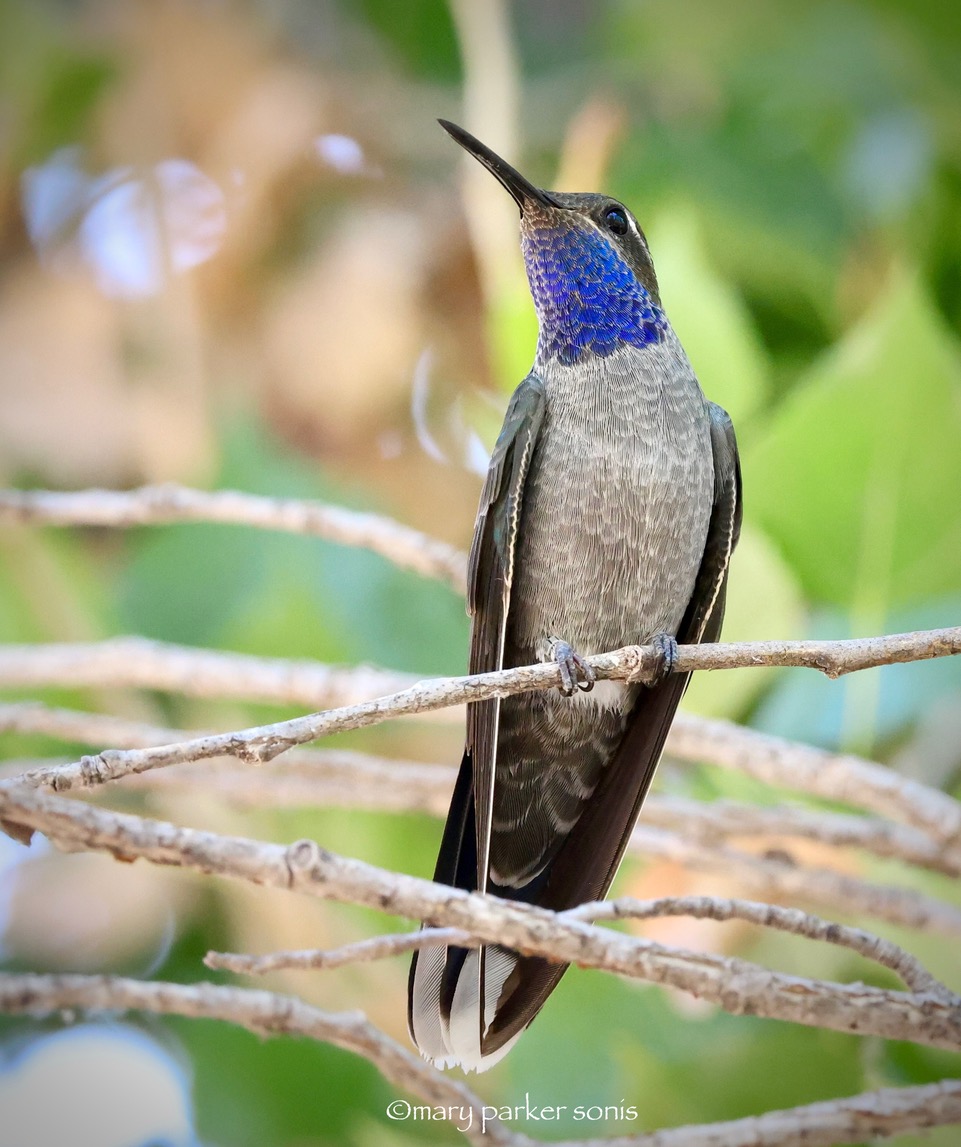
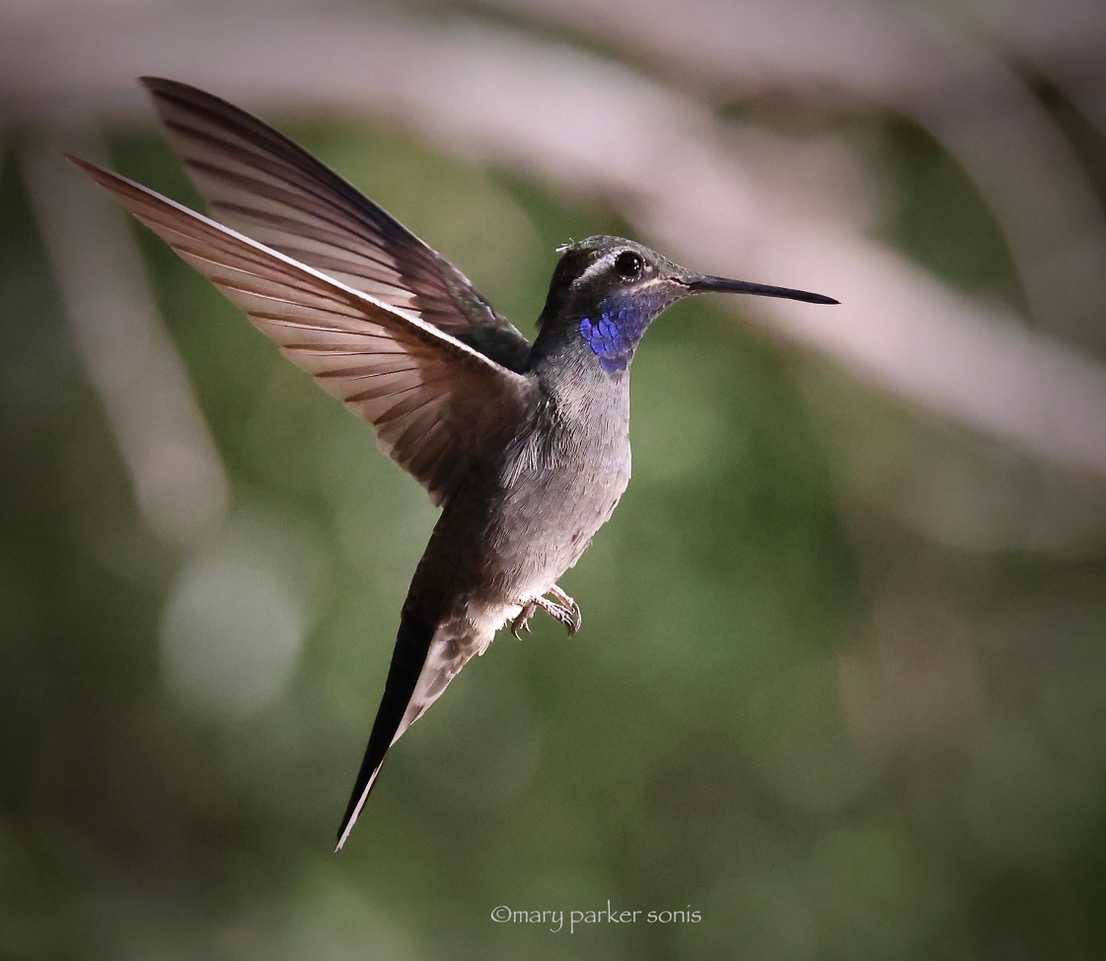
I adored that huge fanning tail. We saw these large Hummingbirds at lower elevations on the ranch, and up higher in the canyon as well.
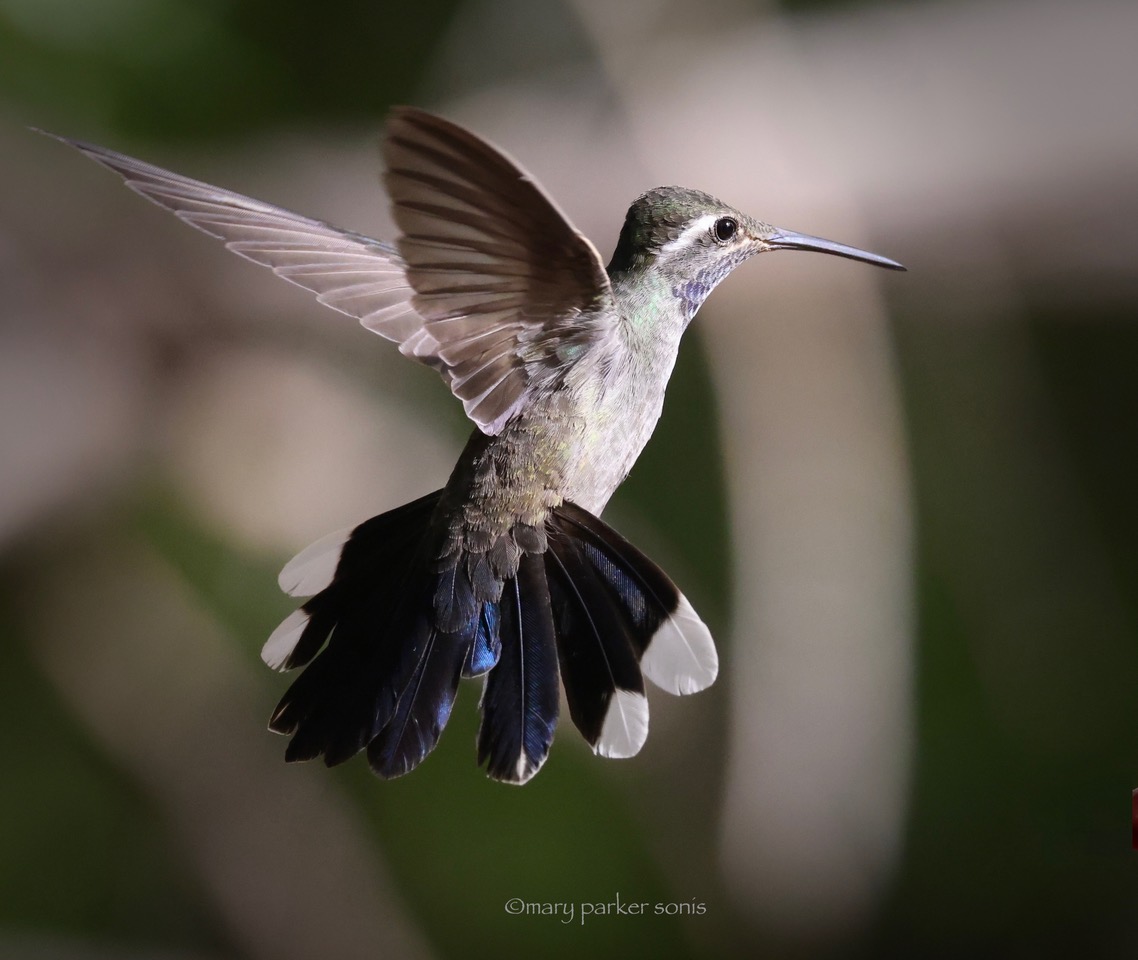
Sprinkler baths were very popular with the Blue-throateds
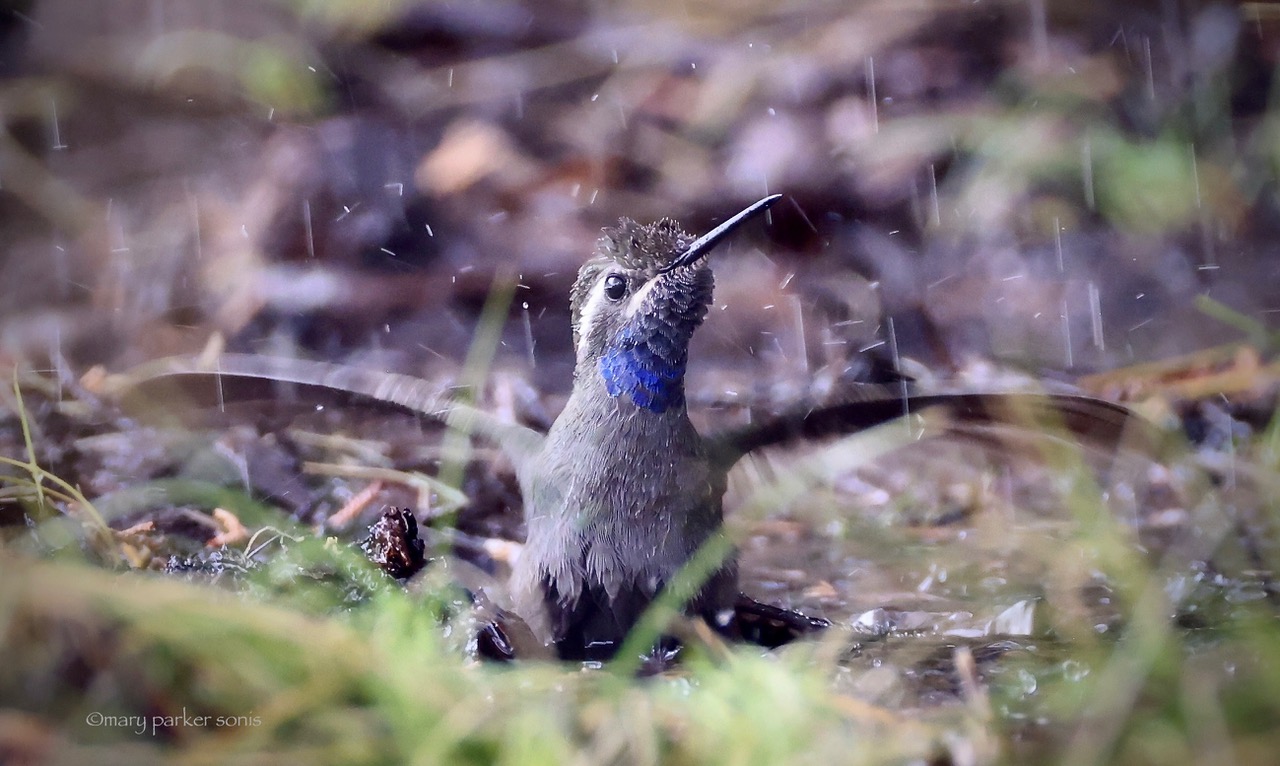
One last look at a handsome Western Tanager, but we’re not quite done with our adventure.
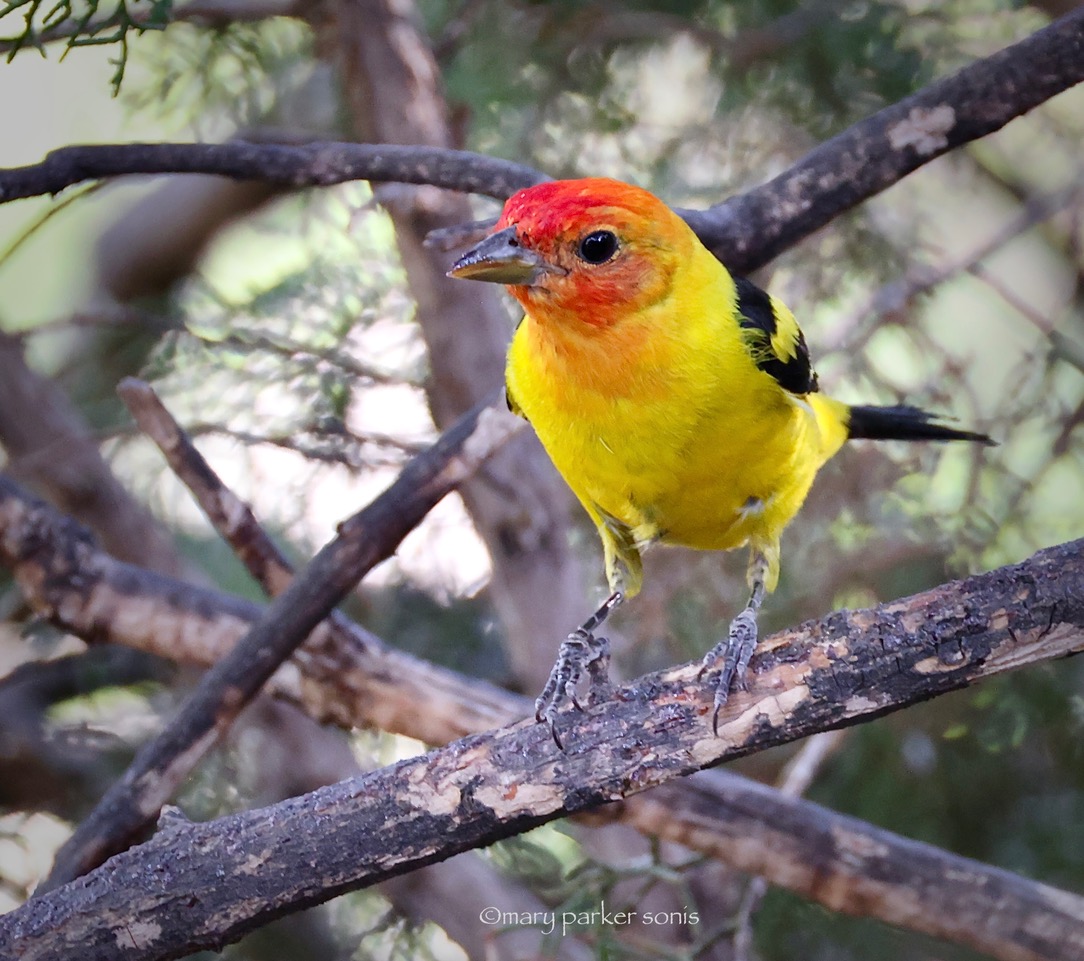
I woke up one morning to see a turkey flinging some object in front of our ranch porch. It turned out to be a Mexican Free-tailed Bat. Bats fill the sky at night in Southeastern Arizona. They control insect populations, and act as pollinators.
We tried to get this bat back in a tree but he was too wounded for help and passed away. Why the turkey took such interest in the bat is beyond me. I’m sorry the little bat did not survive.
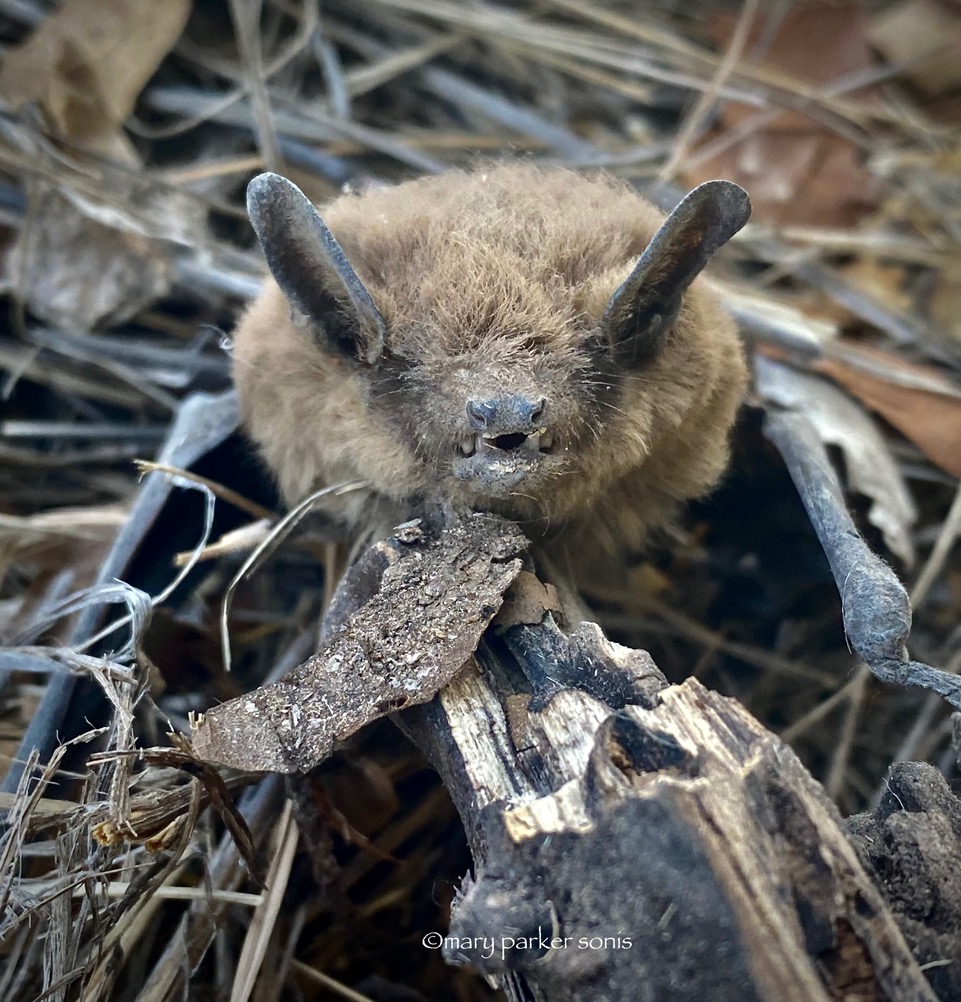
“But wait, there’s more…” Doesn’t that phrase remind you of the crazed late night hard core salesman who tries to convince you to buy some magic glue that seals boats?
Every night on the ranch after dinner we would make a final walk at dusk to look for owls. We failed miserably. By that late hour we were both running on fumes, as a day traipsing around in the hot sun tends to wear a person out. We listened for owl hoots, we checked every sycamore cavity, but it was a no-go. One night, carrying our tiny flashlights to illuminate the gravel path, I looked up, and saw a silhouette. A tiny outline tucked in a Pine caught our attention. I relied upon my trusty camera to at least try to identify the owl. The only small owl (6.8 inches long) with dark eyes, vermiculated gray with rufous streaks; we had located a Flammulated owl. The photo is muddled, but oh my delight! This owl is described as “uncommon and difficult to detect”, but our mission had finally paid off.The owl was on the hunt for moths, silent and hidden from view. The name is derived from the Latin word “flammula” meaning small flame. The flames are the rufous streaks that create the wonderful camouflage of this night hunter.
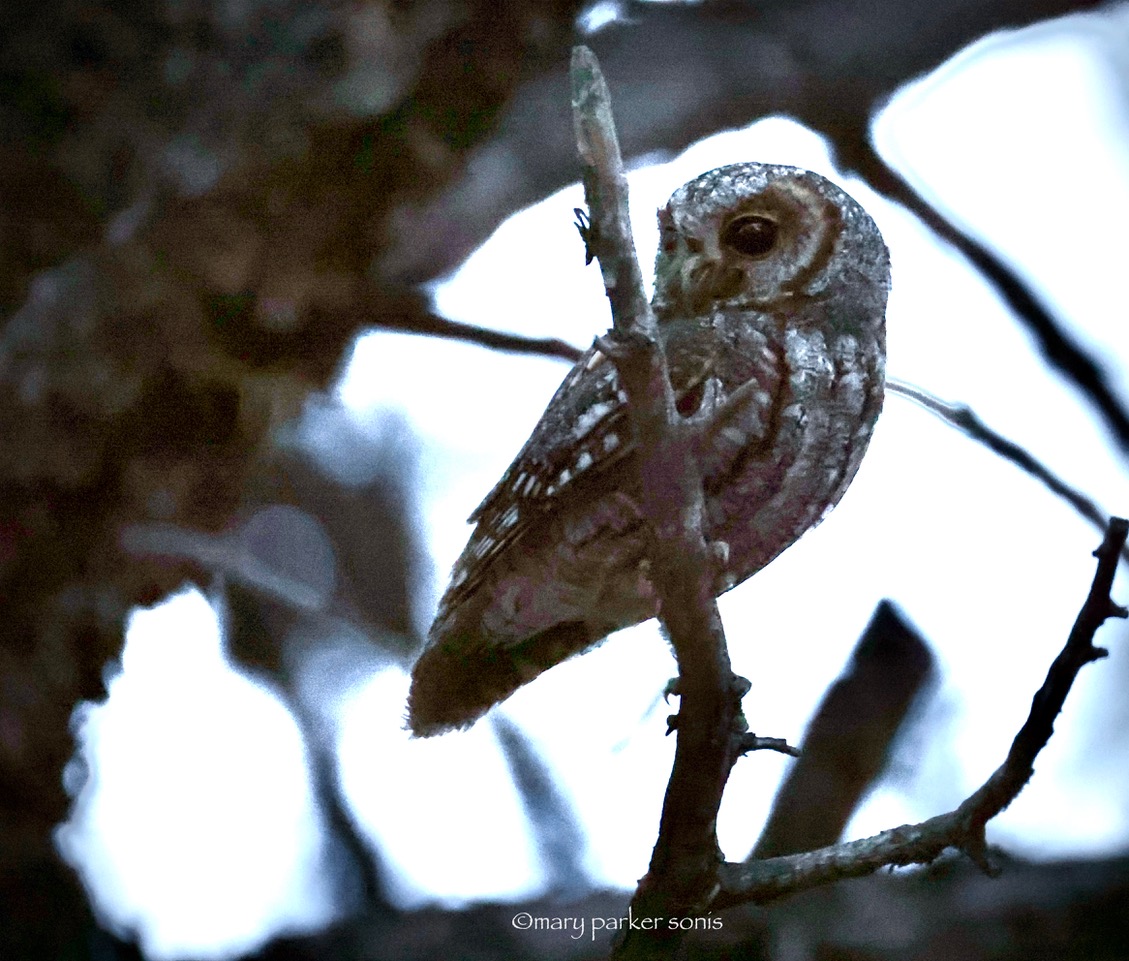
Could the Arizona adventure get any better? Our dinnertime drives of the canyon also paid off. Slowly driving along, we noticed a Bobcat at the edge of the canyon road, and brought the car to an abrupt halt. The Bobcat headed up a narrow single track trail. He didn’t run, but paced along the path at a languid saunter. The only trouble was, he refused to turn around. I blasted loads of frames at the tail end of this relaxed cat, but he just kept going. For a few brief seconds before disappearing into the brush, he turned to face us. For years I have failed to get a decent photo of any Bobcat, but finally, success.
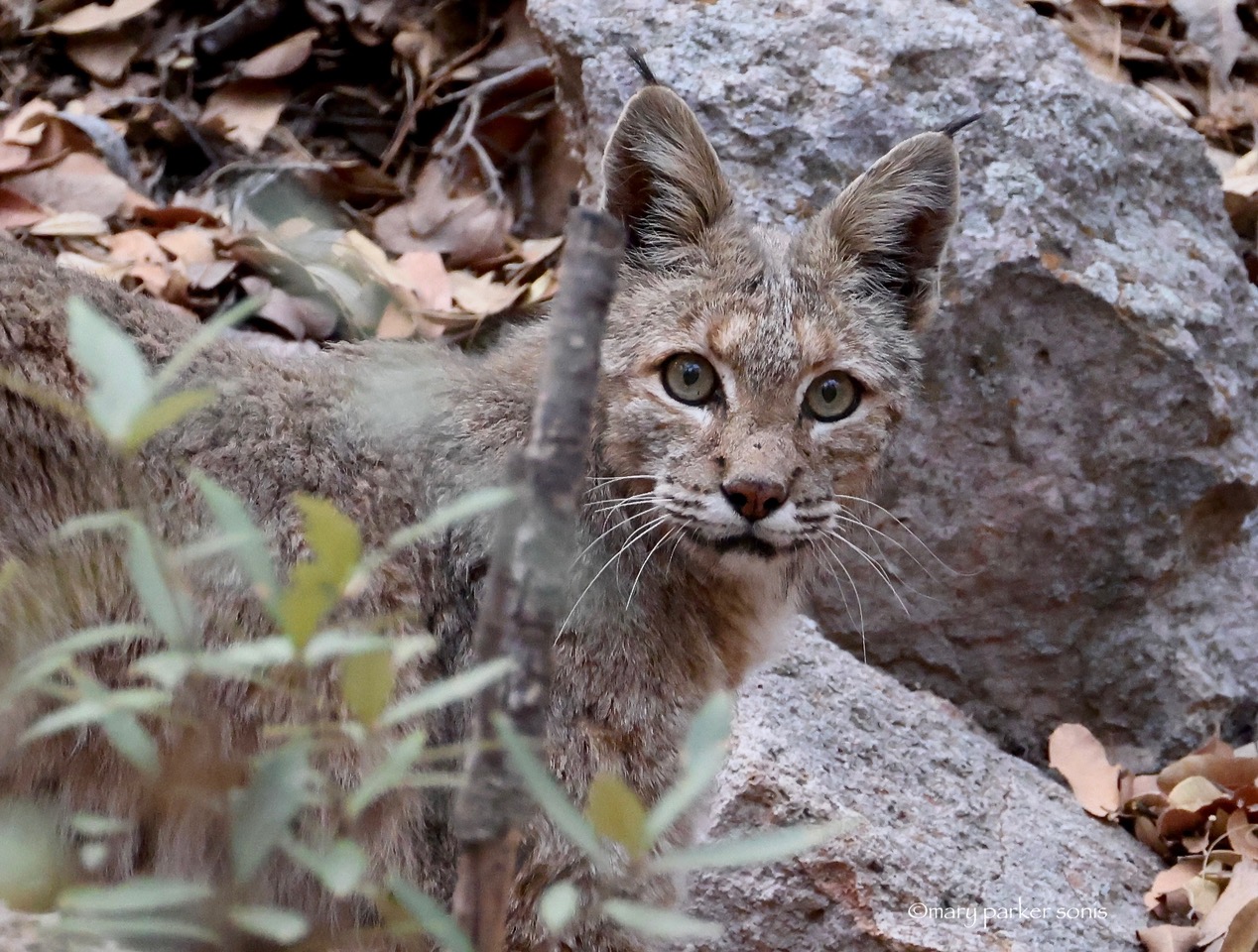
So long from the glorious Cave Creek Ranch and Chiricahua Mountains. Special thanks go out to Karla Schmidt, Denise Ward, Dave Jasper, Carol Simmons, and Dave Steingraeber.
Love,
Mary K